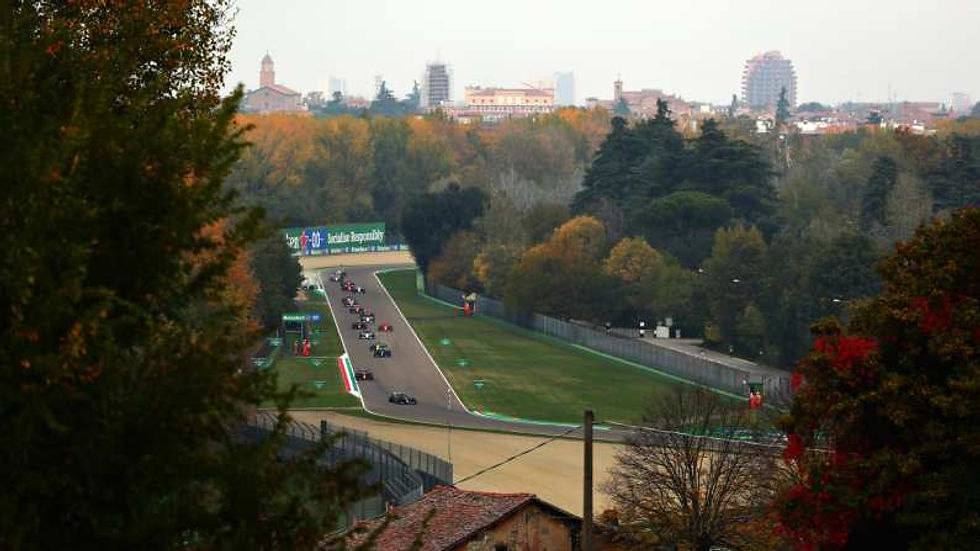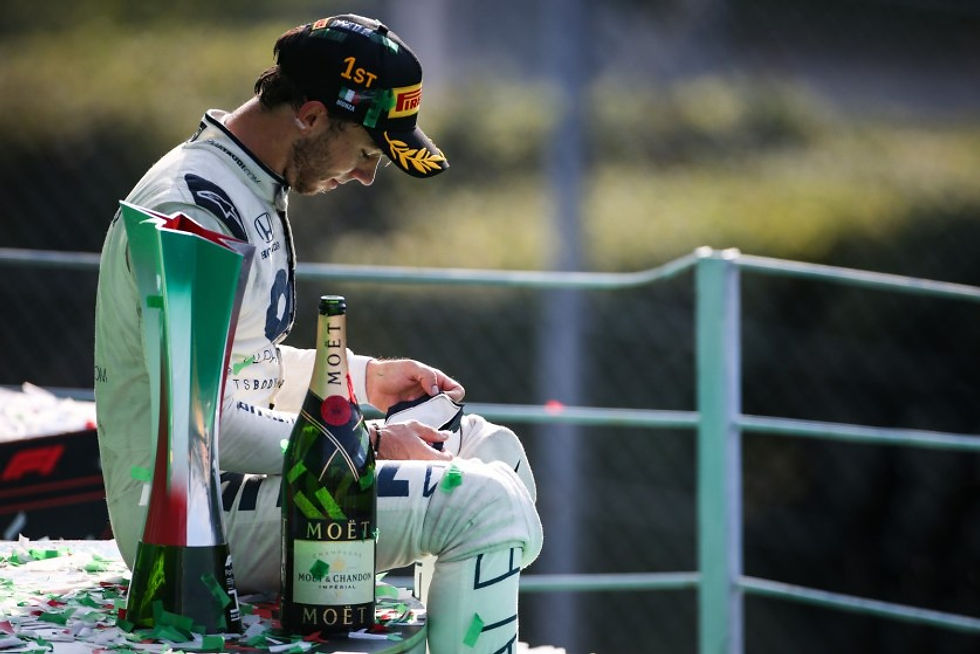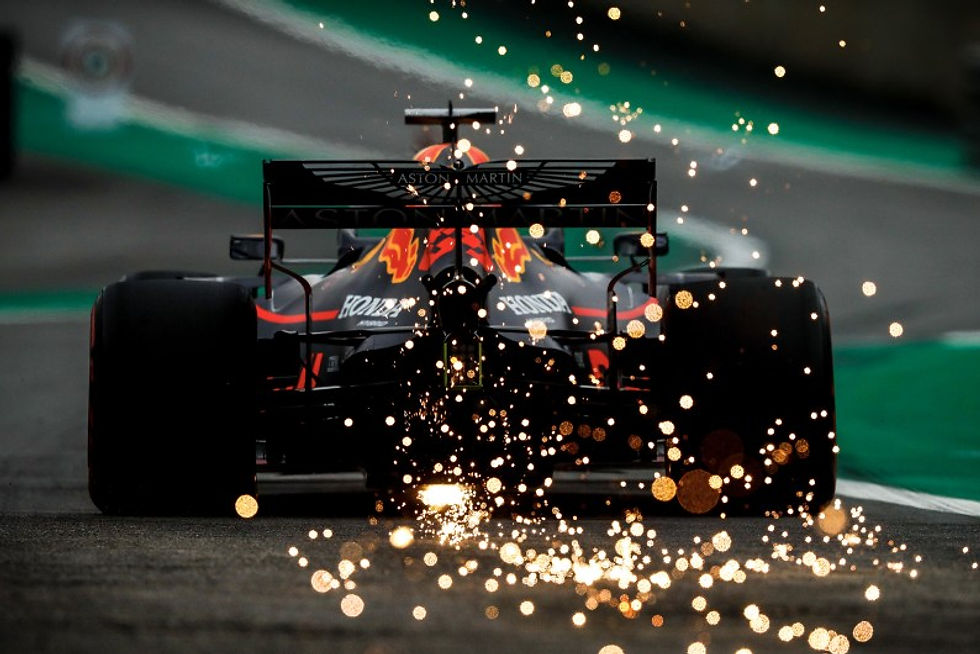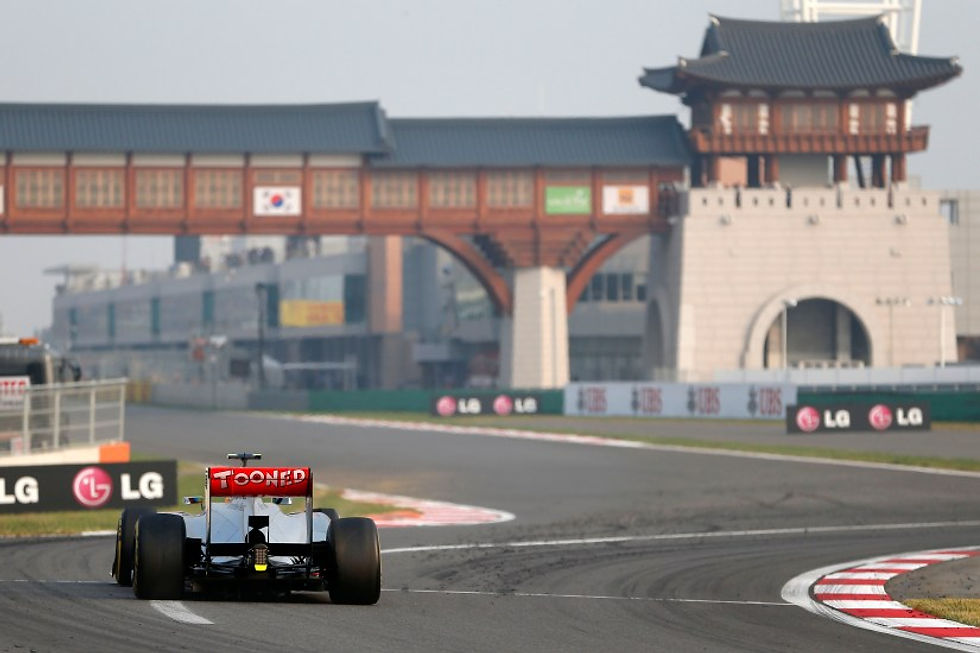How can the Formula 1 calendar become more interesting?
- Thomas Bergamo

- Oct 4, 2021
- 7 min read
Updated: Feb 28, 2022
Written by Thomas Bergamo, Edited by Umut Yelbaşı
These days I’ve read many peoples complaints about the 2022 F1 calendar, so I decided to write about my ideal Formula 1 season schedule, while explaining to you the merits, and also the defects, of each track. Let’s start!
1- Sakhir (BAH)
Sakhir has always given us good races, the drivers really like this track, and there’s the economic advantage for the owners of the circuit. I’ve chosen Sakhir as the opening Grand Prix because the circuit can host the winter test as well, which would reduce the costs of travelling and the polluted air released into the atmosphere.
2- Imola (ITA)
Imola is full of history, and also one of the most liked circuits of the entire grid. It’s an old-style circuit, with gravel and grass instead of the asphalt. The Emilia Romagna president, Stefano Bonaccini, has said he will financially help the Imola racetrack to return to the F1 calendar in a recurring place.

3- Portimão (POR)
Portimão might have been the perfect track. Elevation changes, medium-high speed corners, a long straight, and two DRS zones. I say “might have been” because Portimão has one shortcoming: it misses a low speed corner. Luckily, the first turn has a distinct layout, which forces the drivers to take the turn more slowly. Portimão is also one of the most loved tracks by all the Formula 1 circus, and the Portuguese government would definitely like to maintain Portimão in the calendar.
4- Circuit Ricardo Tormo (ESP)
After the statement from the Barcelona circuit that they won’t be in the F1 calendar from 2022, the Spanish government started looking for a new circuit to host Formula 1. There are multiple reasons for keeping Spain a part of Formula 1, but the most relevant is that they currently have two competitive drivers in the mix. So, the Valencian circuit would be the first of the three newest entries. Ricardo Tormo is an old-style circuit, it doesn’t have financial problems (it has already hosted two Formula E races and two MotoGP races without fans) and the teams won’t have to travel too far from the previous race.
5- Monte Carlo (MON)
Monaco is the real essence of Formula 1: the cars almost touching the walls, the history, the passion, a challenging track… I could continue for another hour explaining why the Monegasque circuit has to stay in the F1 calendar. The only disadvantage is that there aren’t too many overtake opportunities, but this only helps to make qualifying more epic.

6- Hockenheimring (GER)
Hockenheim and crazy races: name a better duo. Germany’s return to the Formula 1 calendar would benefit both F1 and its German fans. The German fans would be able to return to watch F1 live – even those who don’t watch the race live would enjoy it massively because every turn of this track is a possible overtaking spot.
7- Brno (CZE)
Brno would be the second new entry. This circuit has a lot of advantages. First of all it alternates between low-speed corners and long straights. It’s a “stop and go” track which the drivers as well as the fans on the grandstands could enjoy a lot. Brno would have one of the highest elevation changes in the F1 calendar. The circuit presents gravel and grass near the kerbs as well… I will let you imagine the possibilities. Qualifying here would be absolutely epic, and the track presents a lot of overtake spots. It would have two DRS spots on the two final straights. Last but not least, the circuit won’t suffer financial problems because there’s a possibility of it hosting the MotoGP if Karel Abraham, the circuit owner’s son, returns to racing.
8- Hungaroring (HUN)
Most of the Hungaroring races we’ve had so far were beautiful. This track is one of the most technical in the whole championship. It presents many types of turns, from the fastest ones to the slowest ones. It became a recurring stage in the calendar and the partnership between Formula 1 and the Hungarian circuit seems to be continuing.
9- Spielberg (AUT)
The Red Bull Ring is the shortest circuit in the calendar. Almost every turn is an overtake spot! Another characteristic of the Austrian circuit is that you have to have a perfect qualifying session. Every single mistake can drop you from pole position to P10.
10- Silverstone (GBR)
SIlverstone is the home of Formula 1 because, as most of you know, the first F1 race was held on the British circuit. The last races here were all beautiful. Silverstone is a track characterized by its high speed corners, especially the Copse, Maggots, Becketts and Chapel sequence. There are “only” three overtaking spots, but this doesn’t keep the drivers from attempting overtakes in any of the high speed corners.

11- Spa-Francorchamps (BEL)
Spa is one of the most attractive tracks in the Formula 1 calendar. The Eau Rouge – Raidillon combination gives you goosebumps. The track presents a lot of overtake spots (La Source, Les Combes and Bus Stop are the most well-known) alternate with a mix of medium-high speed corners.
12- Le Mans (FRA)
Le Mans would be the last new entry. Every motorsport fan has dreamt at least once to see F1 cars racing on the circuit of La Sarthe. Formula 1 would utilise the shorter circuit layout (4150 meters), which is the one used for the MotoGP races. This layout would present two DRS zones, one on the main straight and the other on the straight between Garage Vert (turn 8) and Chemin aux Boeufs (turn 9).
13- Monza (ITA)
The “Temple of Speed has” always given us very good races. The circuit presents so many overtake opportunities, but there are four main overtake spots: the first chicane, the “Variante della Roggia”, the “Variante Ascari” and the Parabolica turn, now renamed the Michele Alboreto turn. One of the things that make the Monza weekend special is the qualifying. If you want to get the pole, you have to be perfect. In Monza, every second in your teammate’s slipstream can make the difference. So much so that it became a huge talking point in 2019 when the drivers in the main group decided to drive slowly to take the tow themselves, resulting in no one getting proper lap times in.

14- Istanbul Park (TUR)
Istanbul Park is one of the most beloved tracks. It presents one of the most beautiful and challenging turns of the calendar: Turn 8. This flat-out turn is as spectacular as it is challenging for the tyres. There are many overtake spots and the elevation change helps to make the circuit more interesting.
15- Montreal (CAN)
Canada has given us pretty good races and the owners of the circuit don’t seem to suffer any financial problems. Another reason for maintaining Montreal is that Canada has now got two very good drivers in F1, so the fans would pay to see their home heroes race.
16- Autodromo Hermanos Rodriguez (MEX)
Mexico City Circuit is a very nice mix between long straights with low and medium speed turns. The track presents three DRS zones and three main overtake opportunities on turns 1, 4, and 12. Qualifyings in Mexico are epic, and the section between turns 7 and 11, a sequence tackled in sixth gear on average, could make the difference between pole position and the rest. Another very important aspect is the height. The circuit was built 2200 meters above sea level, so the temperature is low, the air is more rarefied, and there is more air pressure – all affecting everything from tyres to aerodynamics.
17- Autodromo Jose Carlos Pace (BRA)
Interlagos has been a big part of Formula 1 history. The circuit is one of the most harmonious tracks in the F1 calendar. The sequence from Descida do Lago (turn 4) to Junção (turn 12) is one of the most beautiful sectors in the whole calendar: it’s an alternation of low and medium speed corners, with two great overtake spots (turn 7 and turn 10). Another thing that makes the circuit more interesting is its changeable weather. The conditions may vary easily, and this can make the race more tricky (we’ve seen an example of how weather changes can affect races in Russia this year).

18- Buddha International Circuit (IND)
Races in India were one of the most beautiful things in the early 2010s. The Formula 1 fanbase has always asked for an epic comeback to India, so we want to satisfy them all. The Indian circuit presents three main overtake spots: turn 1, turn 3 and turn 4. The first part of the circuit is composed of turns with angles at least 90 degrees, and very long straights, meanwhile the rest of the circuit is very technical.
19- Baku Street Circuit (AZE)
Baku has the best street circuit in the whole Formula 1 calendar. The first sector is full of overtaking points, thanks also to the ninety-degrees turns. In the second sector we take a look at the history of Baku and Azerbaijan. This sector is characterized by the Castle turn and, after those, a sequence of high speed corners. The third sector is composed of a medium speed corner and a flat-out zone, which ends at the end of the main straight.
20- Yeongam (KOR)
Yeongam has to be the other fantastic return. This circuit is one of the most fun to drive for the drivers, because they have very few overtake spots and the other two sectors are very technical, especially the second sector with its flat-out turns. Apart from these, the “blind turns” make it more interesting. Last but not least, the tow would play an important role, because the straights are very long and the tow could give you the five/six kilometer-per-hour advantage, which might give you the pole.

21- Kyalami (SA)
A season finale in Africa would be absolutely epic. Kyalami is definitely one of the most beautiful circuits in the world. F1 CEO Stefano Domenicali has said that he wants to bring back the South African circuit into the Formula 1 calendar. Currently this return is planned for 2023, but I think we could see it as early as 2022.














Comments